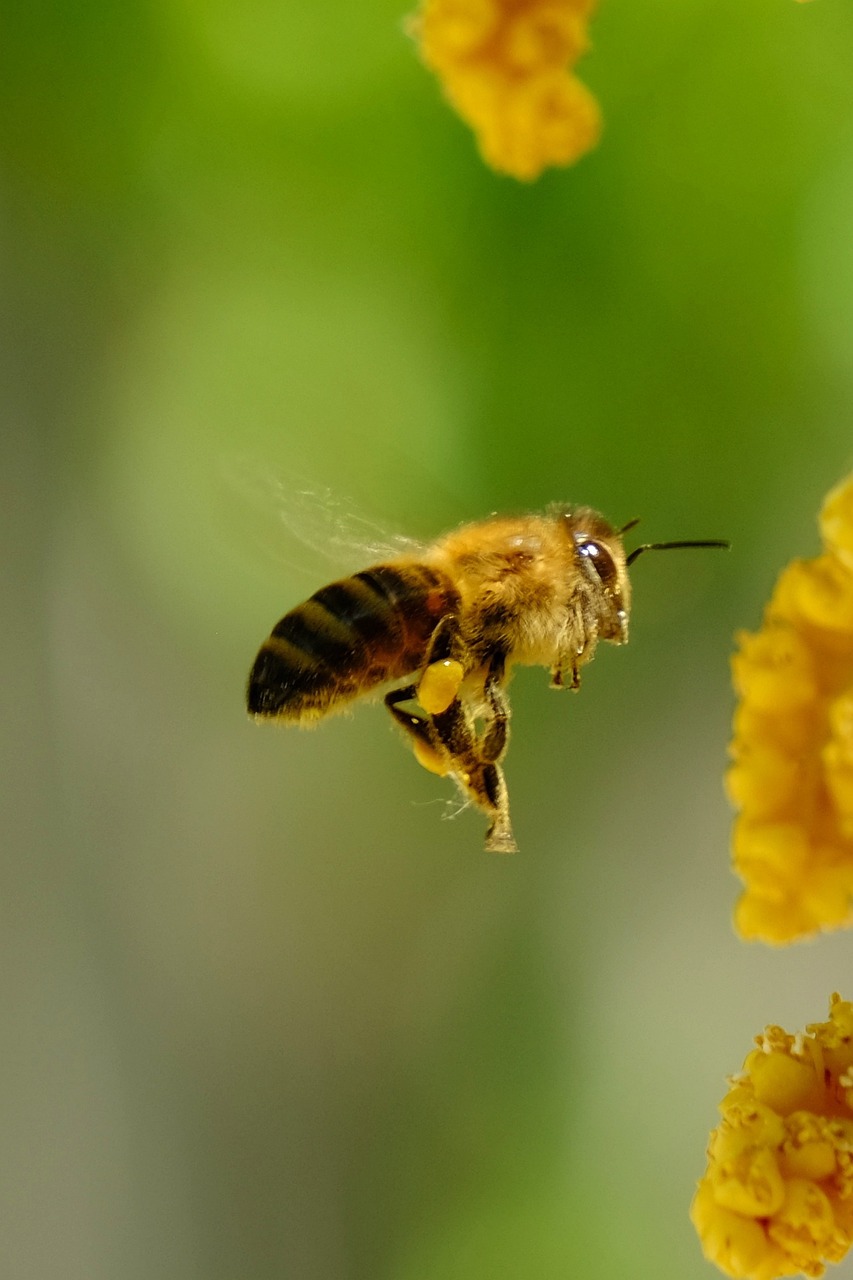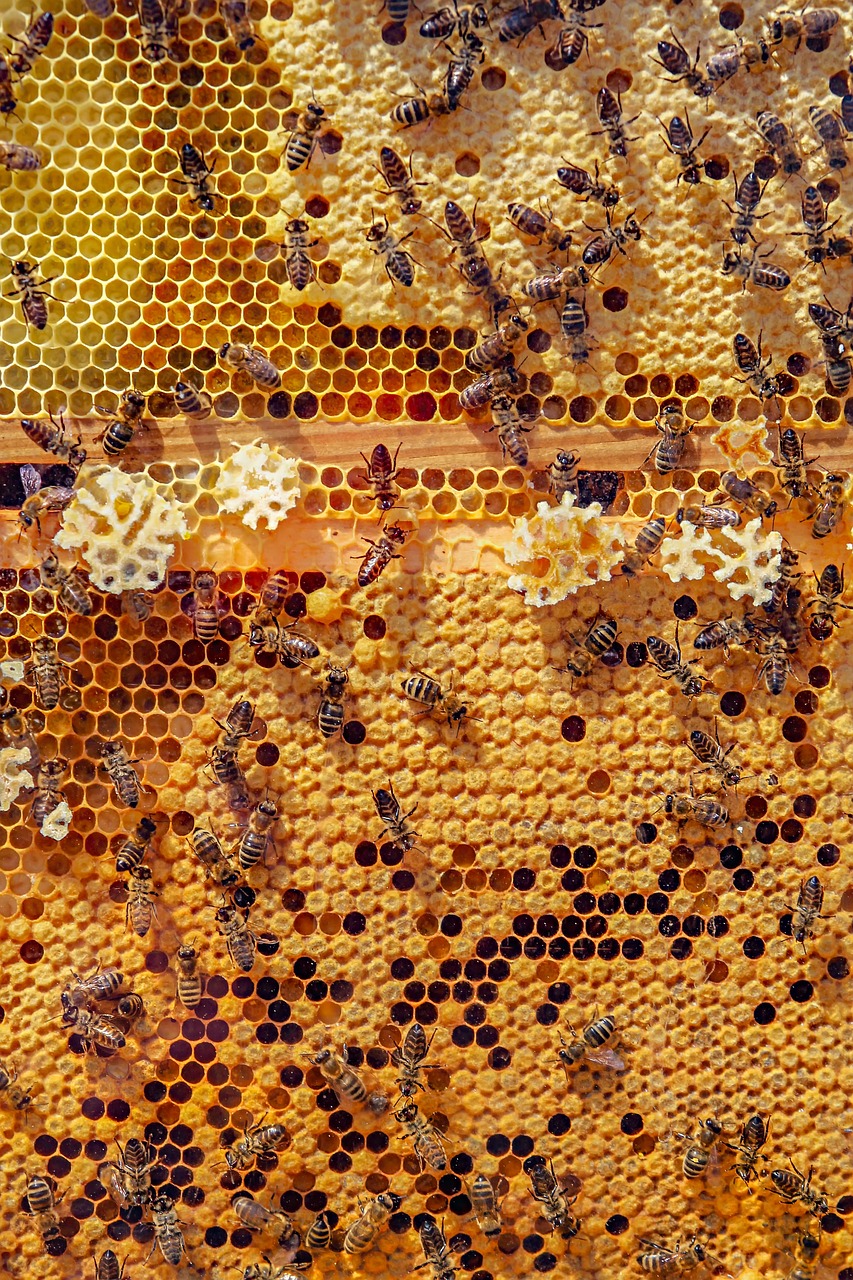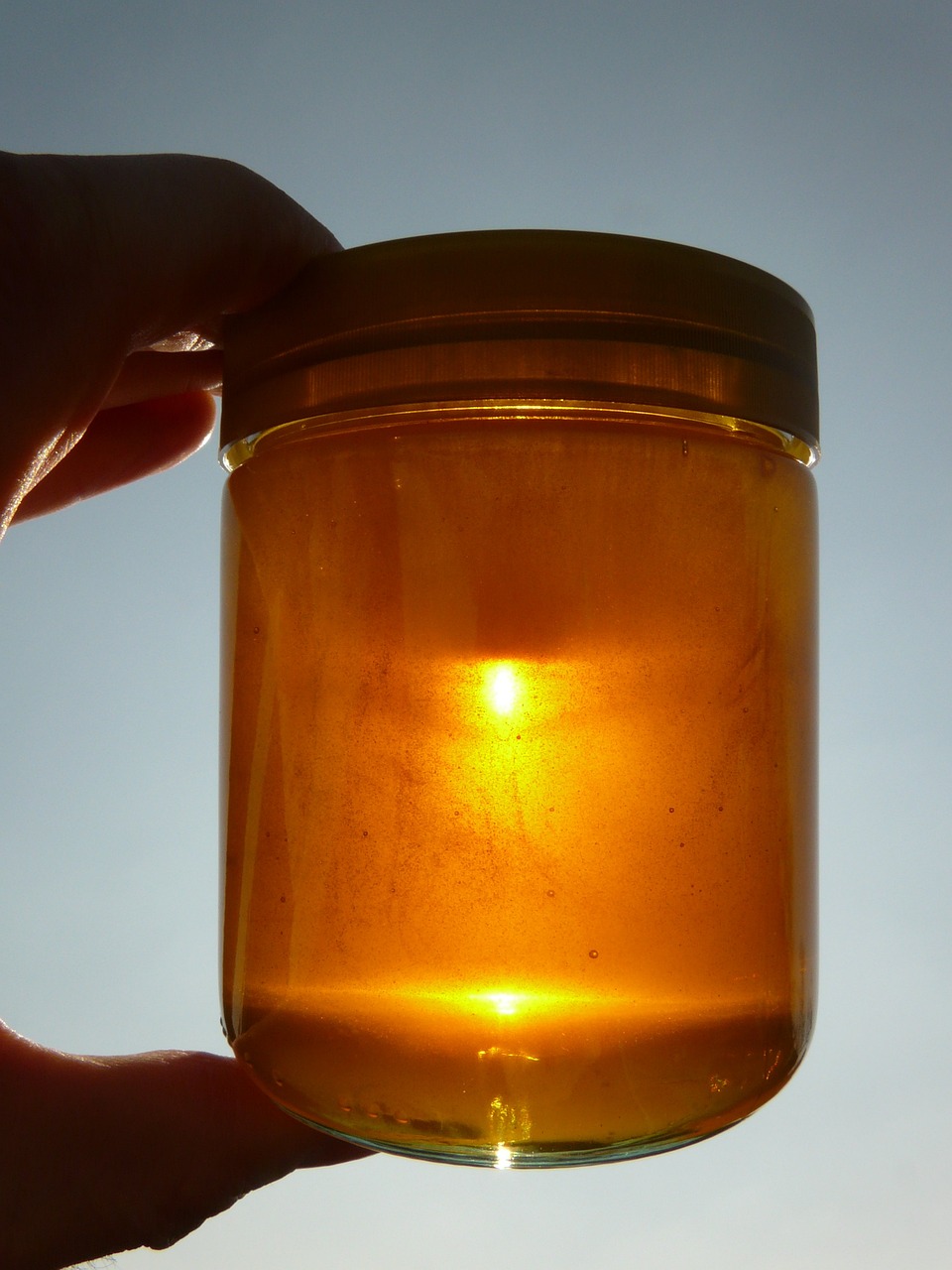Honey Production
Step 1: Foraging
The humble jar of honey has a long way to come before it can be generously spread upon your toast, or added to your favourite tea.
Honey starts out within the depths of flowers, in the nectaries, where they produce the sweet, carbohydrate rich nectar that entices in the pollinations. Female worker bees drink up the nectar using their straw-like tongue (proboscis), and store the nectar in their "honey stomach", before returning to their colony or hive. Already at this point, enzymes in the bees stomach have started breaking down the complex nectar sugars into simple sugars, ready for the next step in honey production.
A 1lb jar of honey weighs 454 grams, and a bee can carry about 0.04 grams of nectar in her honey stomach. But nectar is only 40% sugar (ish) and honey needs to be about 80% sugar, so the bee actually only carries about 0.02 grams of future honey on each trip.
Now how many bees would we need to fill a jar of honey? The answer is 454/0.02 grams which equals
22,700 trips are required to fill a single jar of honey!


Step 2: The Hive & Comb
Now, once the bees have collected the nectar, they need somewhere to bring it back to.
In the hive, worker bees have been busy building comb from wax. Each worker bee has a set of wax glands on their underbelly, that secretes a soft white wax which hardens upon coming into contact with air. The bee then passes this wax up to its front mandibles (jaws), where it is chewed, mixed with saliva, and then used to either build new comb, or put a wax cap on an open comb (which we will come to shortly).
Wax production is incredibly energy intensive for the bee, and it requires on average 8kg of honey to produce 1 kg of beeswax!
Once the comb has been built, it is ready to receive the nectar. The foraging bee passes the nectar to a hive bee, who in turn regurgitates the liquid repeatedly, forming bubbles (and thus a higher surface area) to help excess water evaporate and concentrate the sugars.
When the product reaches storage condition, the droplets are placed into the comb, which is still left uncapped. This is because at this stage, the liquid still contains approximately 70% water, which left unchecked could still spoil or ferment due to the presence of wild yeasts. The prevent this, bees use their own body heat, combined with the fanning of their wings, to regulate the temperature of the hive, and maintain the evaporation process until the water content reaches 16-18%.
As soon as the bees determine the honey is ready for storage, they seal the cell with a wax cap, which helps prevent contamination and further evaporation.
Step 3: Extraction
Once the beekeeper notices that there are fewer flowers in the fields as Summer draws to a close, and that the majority of frames are full of capped honey, s/he will make the decision to start the honey harvest.
The boxes of honeycomb (supers) are taken off the hive, and the sticky process of honey extraction can begin.
The first step is to remove the wax cappings over the cells of honey, to expose the honey within. Then, depending on the equipment to hand, most beekeepers will place their frames of honeycomb into a centrifugal spinner, and with a bit of manual effort, they will spin the frames, forcing the liquid honey from within, out into the drum.
This liquid honey is then passed through a filter to collect any wax debris, before being left to settle out. This settling time allows for any trapped air bubbles (and more wax/bee debris) to float to the top of the honey. This is skimmed off, before the delicious honey is then jarred, ready for enjoyment!



